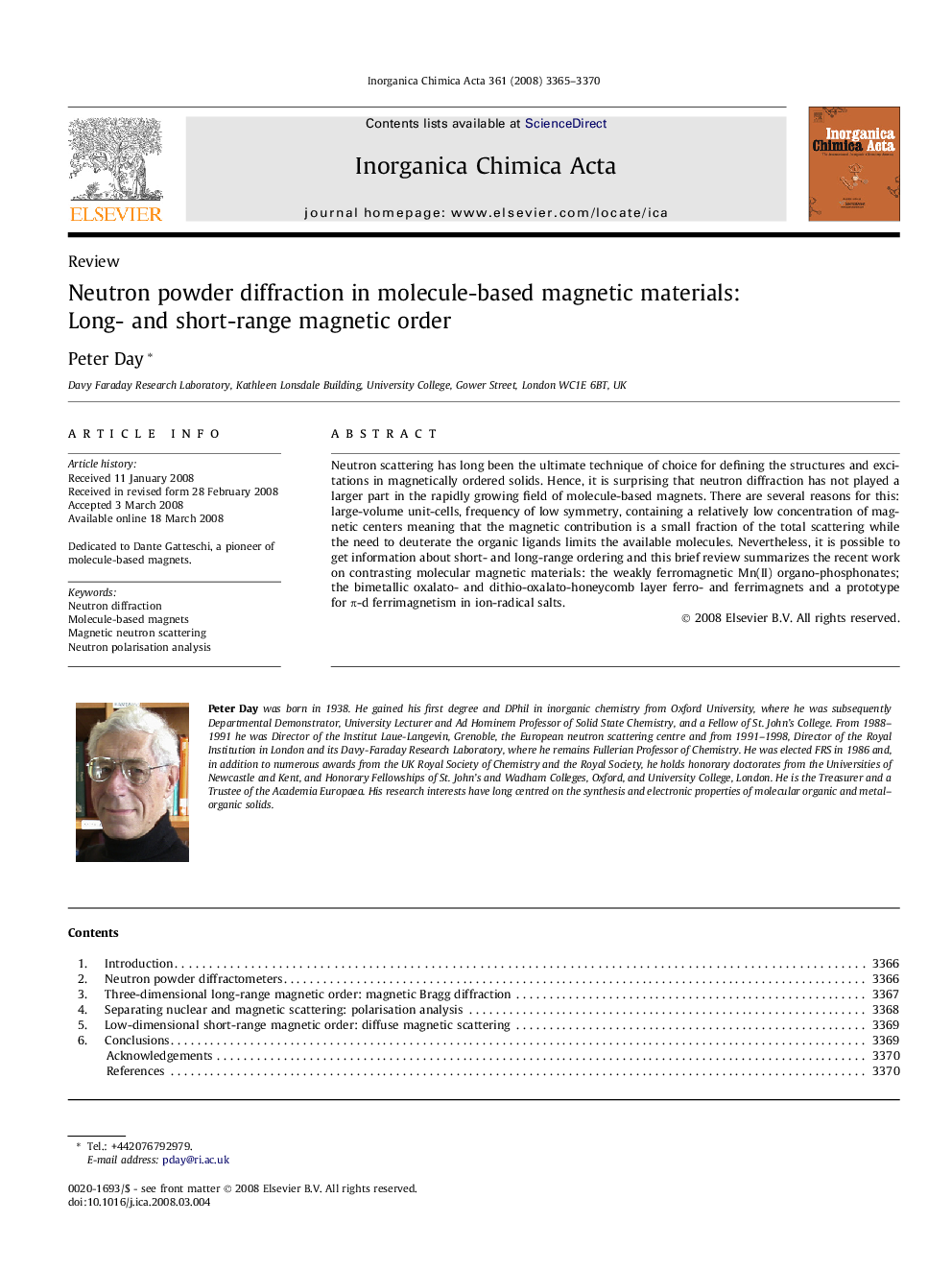| Article ID | Journal | Published Year | Pages | File Type |
|---|---|---|---|---|
| 1311510 | Inorganica Chimica Acta | 2008 | 6 Pages |
Neutron scattering has long been the ultimate technique of choice for defining the structures and excitations in magnetically ordered solids. Hence, it is surprising that neutron diffraction has not played a larger part in the rapidly growing field of molecule-based magnets. There are several reasons for this: large-volume unit-cells, frequency of low symmetry, containing a relatively low concentration of magnetic centers meaning that the magnetic contribution is a small fraction of the total scattering while the need to deuterate the organic ligands limits the available molecules. Nevertheless, it is possible to get information about short- and long-range ordering and this brief review summarizes the recent work on contrasting molecular magnetic materials: the weakly ferromagnetic Mn(II) organo-phosphonates; the bimetallic oxalato- and dithio-oxalato-honeycomb layer ferro- and ferrimagnets and a prototype for π-d ferrimagnetism in ion-radical salts.
Graphical abstractThe scope of neutron powder diffraction in investigating long- and short-range magnetic order in molecule-based magnets is surveyed using some recent examples.Figure optionsDownload full-size imageDownload as PowerPoint slide
